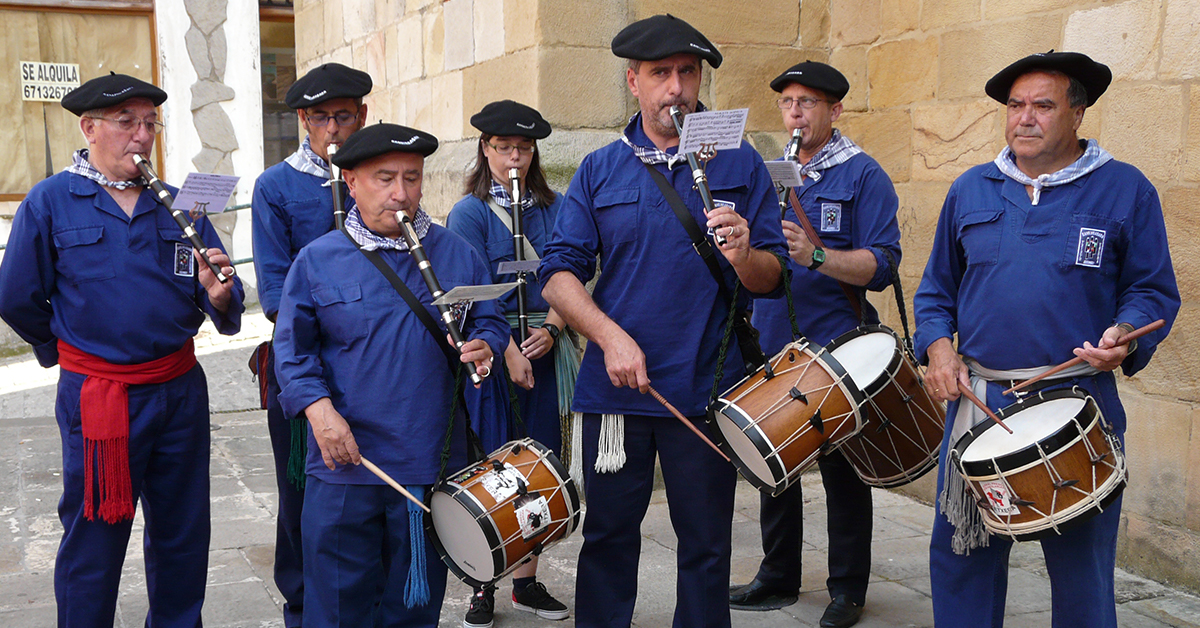Basque ethnography at a glance
The use of a hewn pipe seems to date back to prehistoric times, but it would be in the Middle Ages when a musical revolution occurred and when the melodic combination of the three-holed fipple flute and the rhythm of the tabor drum by the same player (jesters and minstrels) would develop and spread throughout Western Europe (Italy, France, Spain, Portugal and even be taken to The Americas). In the 16th century, the jesters and minstrels taught courtly dances and livened up tournaments or the social events of the nobility. Those unwonted scenes inspired the popular classes to adopt that figure in their civil and religious celebrations, festivities, processions, pilgrimages, ceremonies where the entertainment was provided by peddlers. Paradoxically, there were all known by the same widely used name of “taborers” (danbolin). In around the 18th century, given their musical development and evolution in courtly and plebeian settings, a bitter struggle broke out between those who could and those who could not read music (in their search for fame and fortune from their performances).
I can’t even remember when I last ate elvers! I only know that it was a long time ago. Now I come to think about, I am whisked back to my childhood, when I would watch those tiny cars (Seat 600, 127, 850, R-5…; tiny compared to the current ones) go by, with long sticks and large sieves, sometimes tied to the roof racks and other times just sticking out of the car windows. Those people would be coming back from fishing for elvers where the River Butrón flowed into the Plentzia estuary.
Elvers were and continue to be typically eaten on Christmas Eve. Yet they were and still are a luxury product that not everyone can afford. That meant that a few decades ago, quite a few people would catch and sell them to make some extra money. However, some people only would go from time to time and catch them to be eaten at home.
In Gernikaldea, women and men alike traditionally wore dark simple clothing to work in the fields. When it came to working in the barn and stalls, they would wear any old clothing so it did not matter if it became stained with manure or when milking.
When ploughing or working in the market garden, men wore denim and often patched (erremenduak) trousers, a denim or gingham shirt, waist belt (garrikoa) to help with lower back pain, an old jumper and a beret (txapela) on their head.
Women wore a skirt (gona), blouse and a jacket over it, apron (amantala) and headscarf. If they had to pop out to the vegetable garden in bad weather, they would put the galoshes that were usually kept in the porch over their canvas shoes.
Hidden away in the sabayao or attic, frequently broken or damaged, are old ceramic vessels that have outlived their use and survived the inevitable passing of time. The odd few, but increasingly more, are clean, and proudly on display in the home. We often cannot agree on how to call them and concepts such as stew pot, jar, pitcher, cooking pot, basin, pan, jug, etc are all intermingled and confused in the popular vernacular. However, all share the fact that they were all handcrafted and played an important role of being used to store, cook and serve food in the home.





